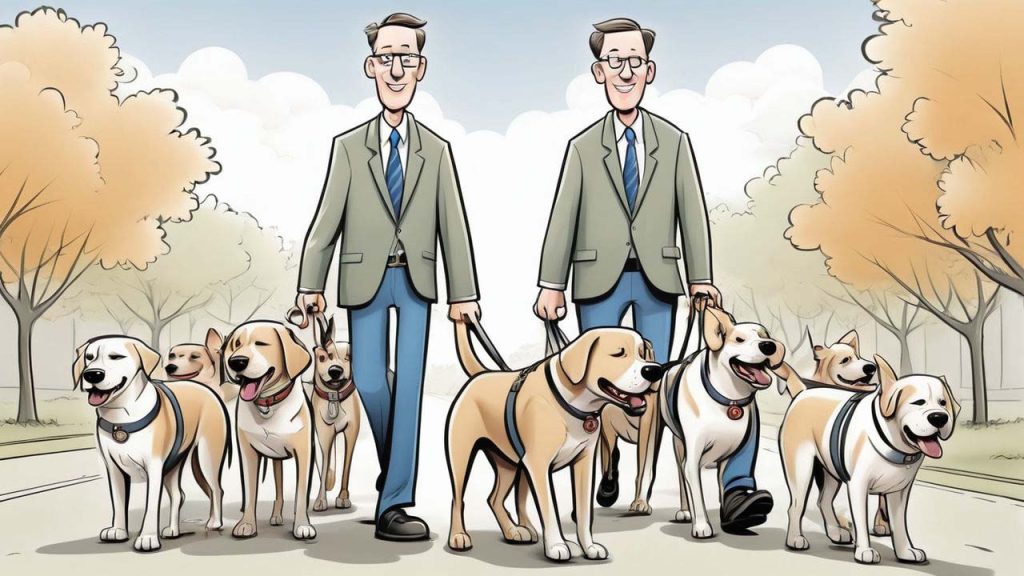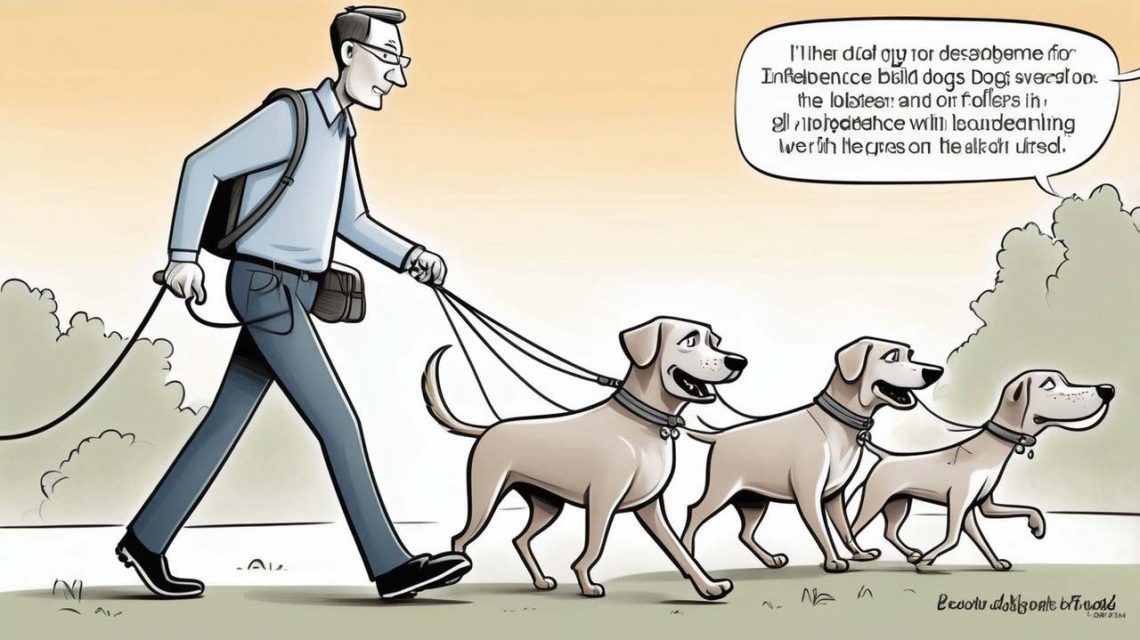For individuals who are blind or visually impaired, leader dogs provide life-changing independence, mobility, and companionship. Leader Dogs for the Blind is an organization that trains and places specially chosen dogs to become loyal guides, helping their handlers navigate the world with confidence and freedom. From training and puppy raising to matching each dog with the right handler, Leader Dogs for the Blind works tirelessly to bring mobility, support, and a sense of connection to those in need.
In this article, we’ll delve into the inspiring journey of these incredible dogs, the rigorous training process, and how Leader Dogs for the Blind transforms lives one partnership at a time.
What Are Leader Dogs for the Blind?
Leader dogs are highly trained service animals whose primary role is to provide safe, reliable guidance to people who are visually impaired. Unlike regular pets, these dogs are chosen and trained for their ability to make crucial decisions, help navigate obstacles, and bring independence to their handlers.
1. Essential Mobility and Safety
A leader dog’s primary role is to guide their handler safely through various environments. From busy city streets to unfamiliar buildings, leader dogs enable their handlers to move independently, making day-to-day activities accessible and safe.
2. Companionship and Confidence
Beyond practical assistance, leader dogs offer companionship and emotional support. This relationship fosters a profound sense of confidence and comfort, empowering handlers to take on new experiences and environments with ease.
3. Tailored Training for Individual Needs
Leader Dogs for the Blind ensures that each dog is trained to meet the specific needs of its future handler. From walking pace to lifestyle compatibility, the organization tailors training to match the unique requirements of every individual, making each partnership truly customized.

The Journey of Training a Leader Dog
Training a leader dog is an intensive, multi-stage process. From early socialization to advanced guide training, each stage ensures the dog is prepared to navigate the unique challenges of being a service animal.
1. Puppy Socialization
The journey begins with volunteer puppy raisers who help socialize the puppies. This stage focuses on exposing puppies to various environments and basic obedience training.
- Volunteer Puppy Raisers: Volunteers provide a safe, loving home for puppies while introducing them to different sights, sounds, and experiences. This exposure is vital for developing confidence and adaptability.
- Basic Commands: Puppies learn foundational commands like “sit,” “stay,” and “come.” This basic obedience sets the stage for advanced training.
2. Formal Guide Training
Once puppies reach about 12 to 14 months of age, they enter formal guide training. This is where they learn essential guiding skills that prepare them for their role as leader dogs.
- Obstacle Avoidance: Dogs are taught to guide their handler around obstacles such as curbs, stairs, and low-hanging branches.
- Intelligent Disobedience: If a handler gives a command that could lead to danger, such as crossing a street when a car is approaching, the dog learns to disobey the command and protect both of them.
- Directional Commands: Commands like “left,” “right,” and “forward” guide the handler to their destination safely and efficiently.
3. Matching Dogs with Handlers
Matching a leader dog with the right handler is a meticulous process. It ensures compatibility in lifestyle, walking pace, and individual needs.
- Team Training: Once paired, the new team undergoes training together, learning to communicate and build trust.
- Building Trust: This phase allows both the dog and handler to get comfortable working together, establishing a bond based on mutual respect and understanding.
How Leader Dogs Impact Lives
Leader Dogs for the Blind provides visually impaired individuals with a profound sense of freedom and independence, changing lives in countless ways.
1. Enhanced Mobility and Freedom
Leader dogs help their handlers navigate daily tasks independently, from commuting to work to running errands. This freedom opens doors to personal growth, employment, and active participation in society.
2. Increased Social Interaction
Leader dogs serve as natural conversation starters, helping handlers connect with others. This increased social interaction builds relationships, reducing isolation and loneliness.
3. Emotional Support and Companionship
The companionship of a leader dog goes beyond their guiding role. They provide comfort, reduce anxiety, and improve mental well-being, offering a constant presence of unconditional support.
Choosing and Training the Right Dog Breed for Leadership
Not all breeds are suitable for leader dog roles. Certain breeds possess the ideal combination of temperament, intelligence, and physical capability to excel in this demanding role.
1. Labrador Retrievers
Labradors are commonly chosen for their calm demeanor, intelligence, and eagerness to learn. Their friendly nature and adaptability make them ideal for handling varied environments and tasks.
2. Golden Retrievers
Golden Retrievers have a gentle, patient nature that makes them well-suited for leadership work. They are also highly trainable and bond easily with their handlers.
3. German Shepherds
Known for their focus and discipline, German Shepherds are reliable and excel in challenging environments. Their loyalty and confidence make them a strong choice for guide dog work.
Supporting Leader Dogs for the Blind
Leader Dogs for the Blind is a non-profit organization that depends on donations, volunteers, and community support to continue their impactful work.
1. Volunteer as a Puppy Raiser
Volunteer puppy raisers provide foundational training and socialization, playing a crucial role in each future leader dog’s success.
- Requirements for Raising: Puppy raisers commit to housing and socializing the puppy for 12 to 15 months, preparing them for advanced training.
- Training Support: The organization provides resources and training for volunteers, helping them effectively prepare the puppy for guide work.
2. Donate to Support Training and Matching
Training leader dogs and pairing them with handlers is a costly process, often exceeding $50,000 per dog. Donations cover training, veterinary care, and matching services, allowing the organization to provide leader dogs free of charge.
3. Raise Awareness and Advocate
Spreading awareness about Leader Dogs for the Blind helps improve accessibility and respect for guide dog teams. Educating others about the role and rights of leader dogs in public spaces makes a positive impact on the lives of handlers.
FAQs About Leader Dogs for the Blind
How long does it take to train a leader dog?
- The full training process, from puppy socialization to advanced training, typically takes about two years.
Do handlers need to pay for a leader dog?
- No, most organizations, including Leader Dogs for the Blind, provide leader dogs free of charge to eligible handlers, thanks to donations and funding.
What happens if a dog doesn’t complete training?
- Dogs that don’t complete training are often placed in loving homes as pets or service dogs in other roles.
How are handlers chosen for each dog?
- Handlers undergo an application process and are carefully matched with dogs based on lifestyle, pace, and personal needs to ensure a successful partnership.
Can leader dogs go everywhere with their handlers?
- Yes, under ADA laws, leader dogs have the right to accompany their handlers in most public places, including restaurants, shops, and public transportation.


